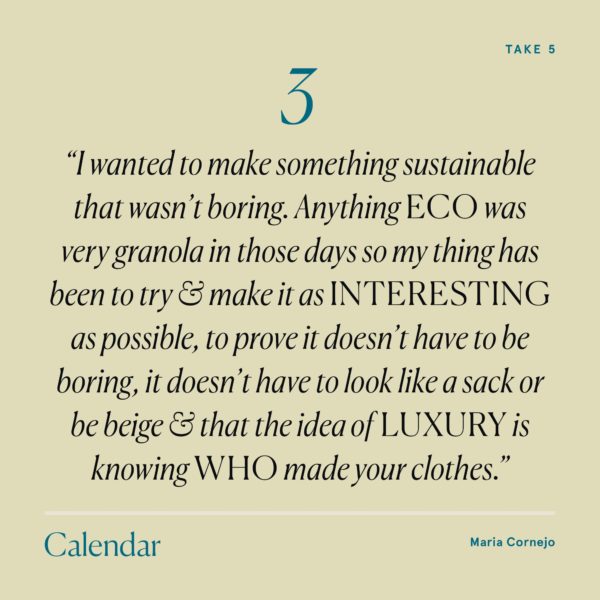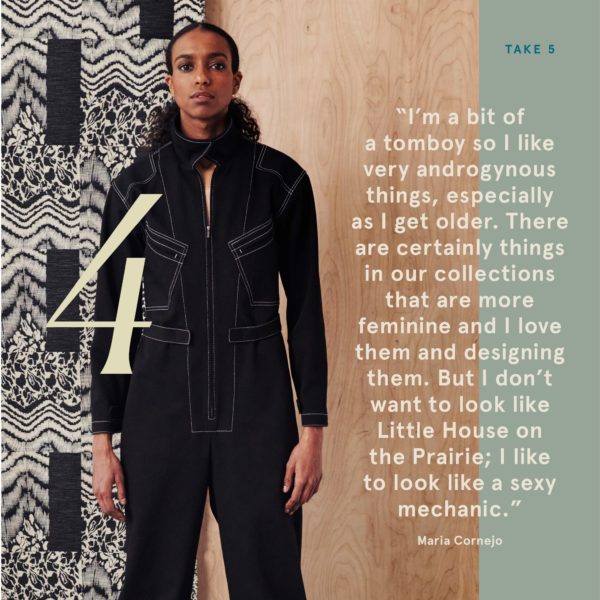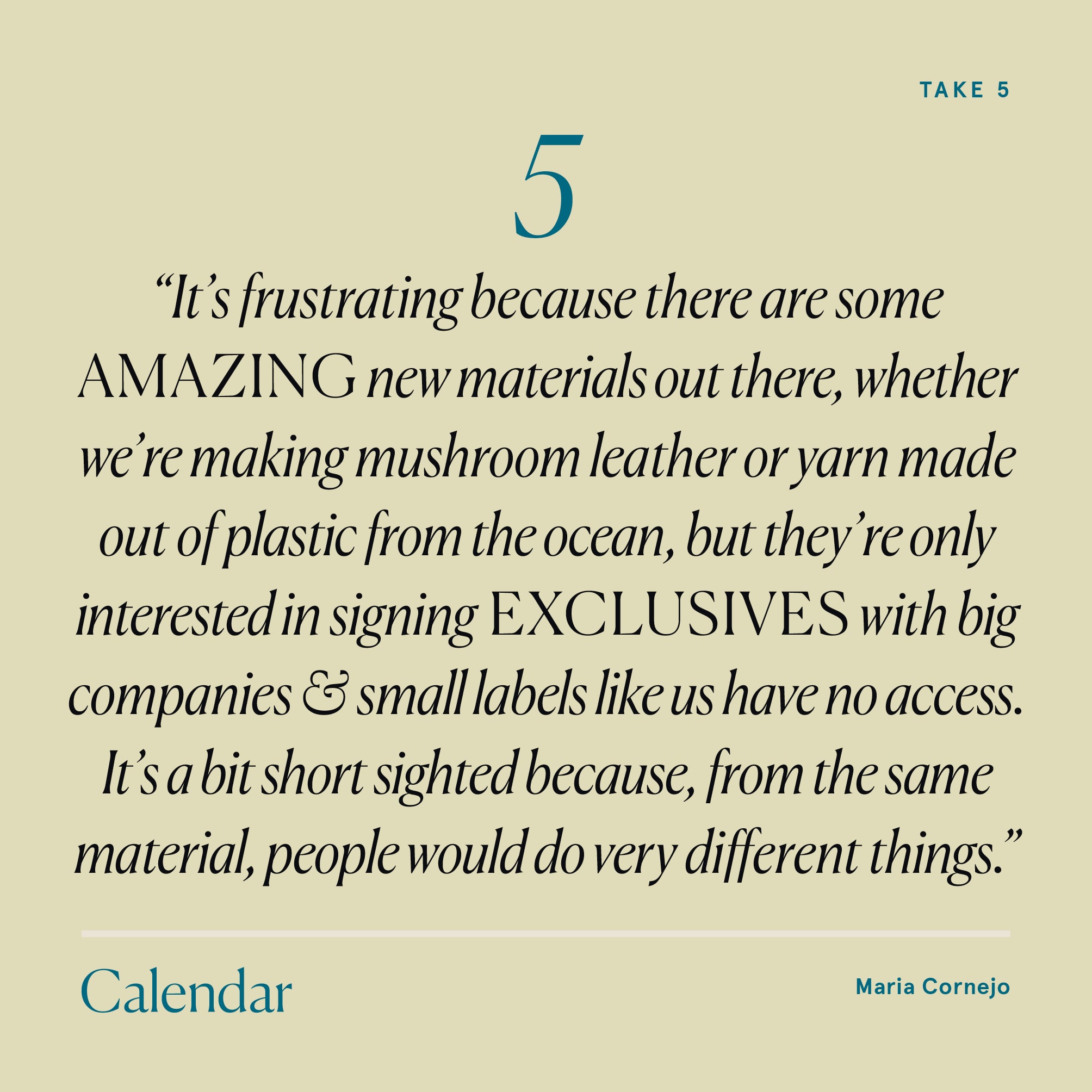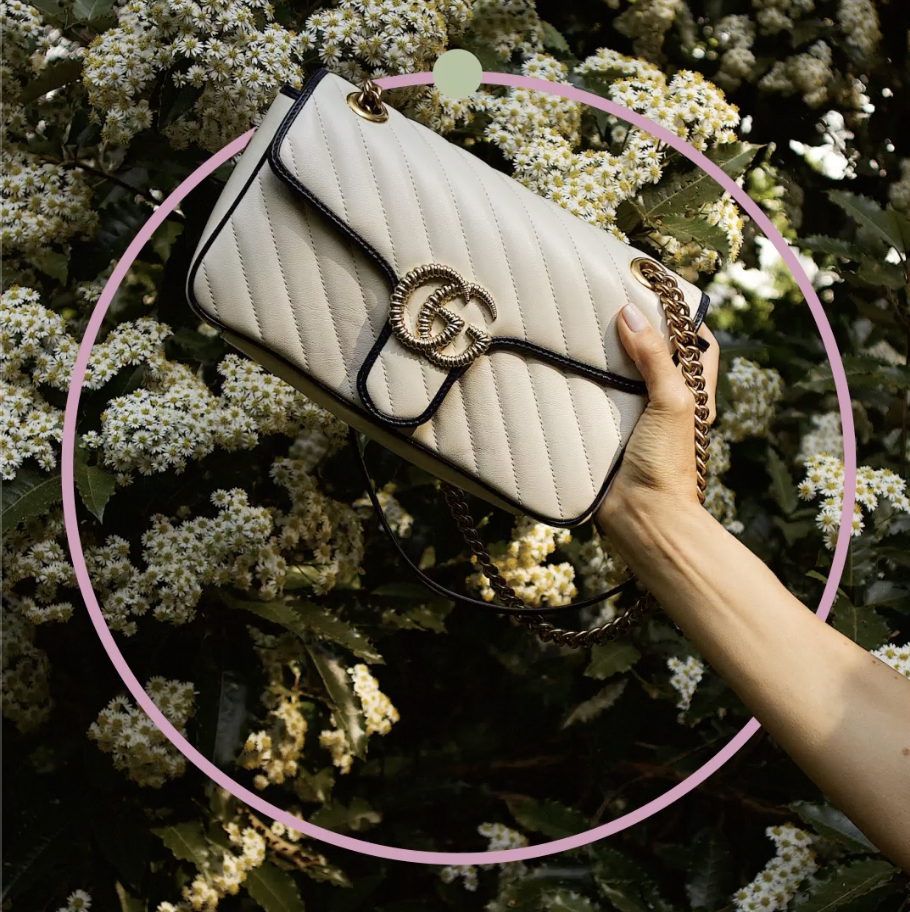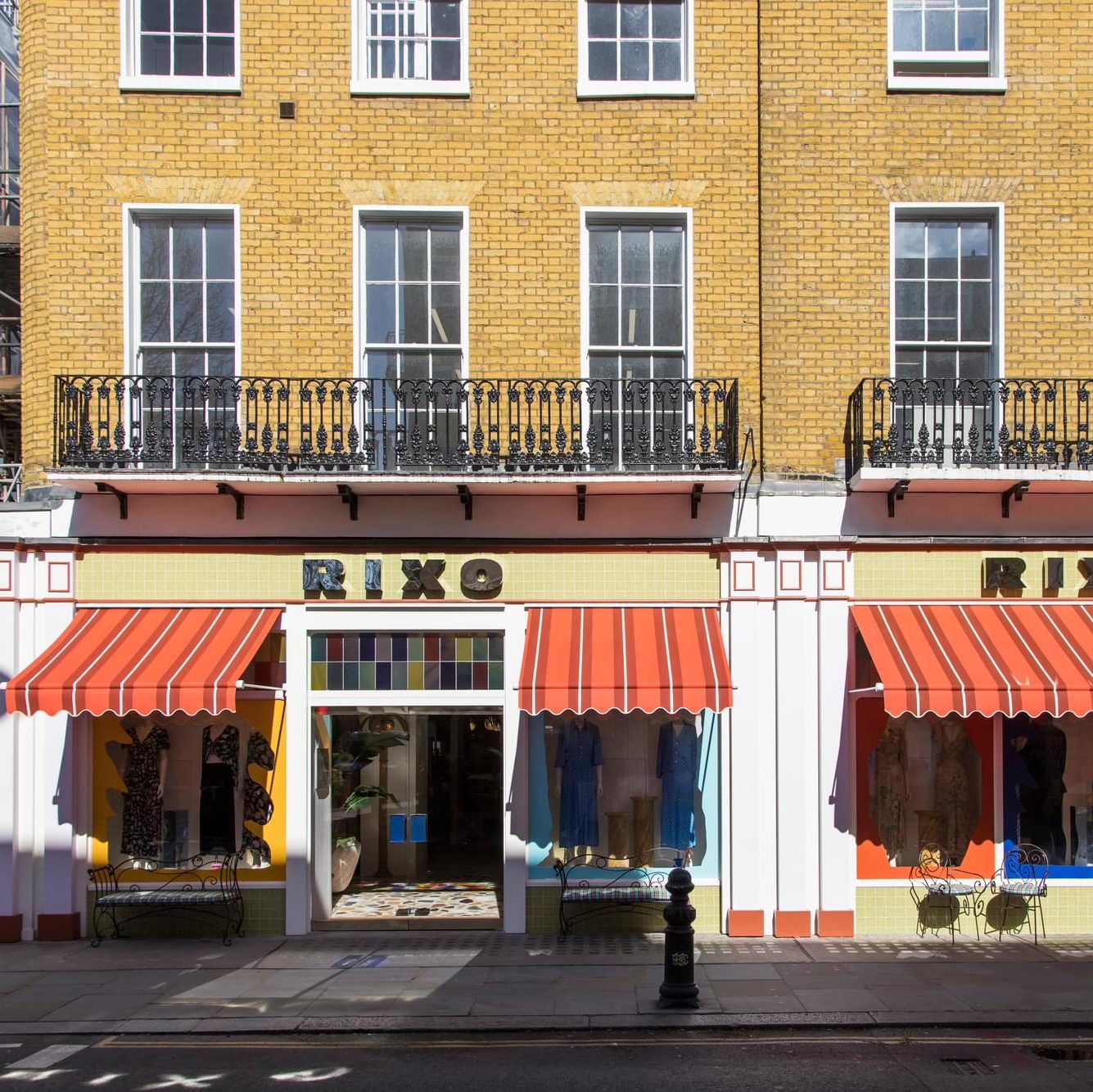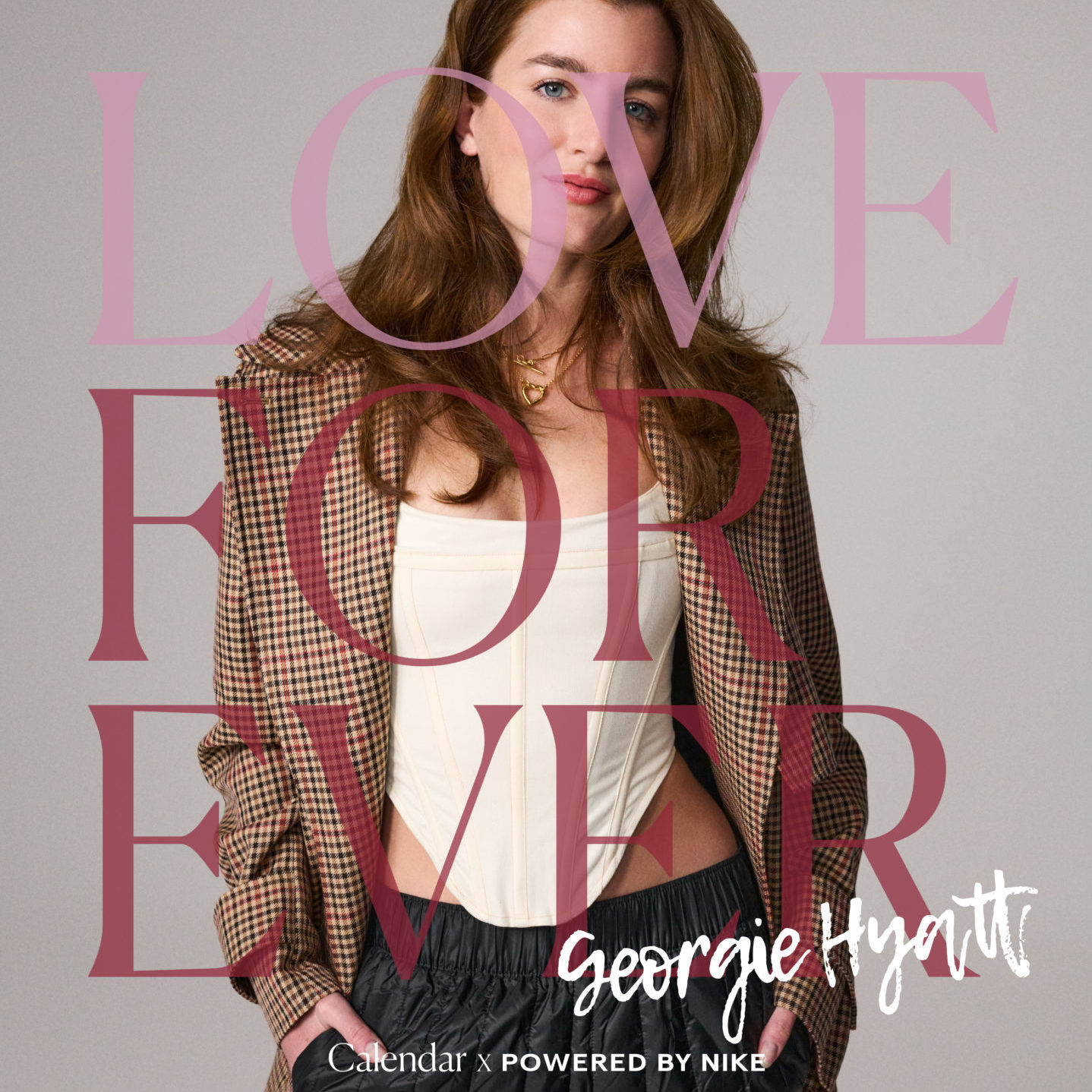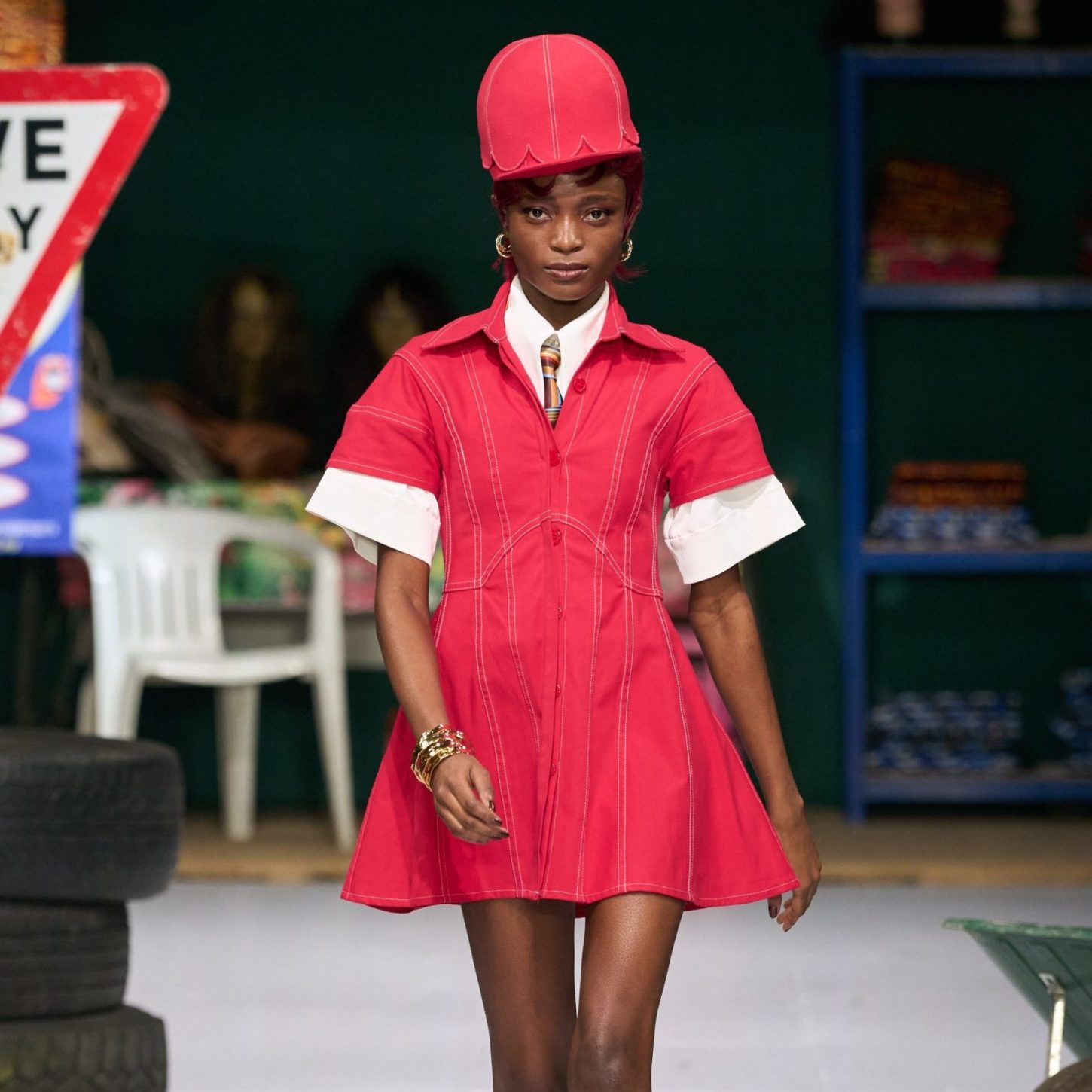July | Take 5
With Maria Cornejo
The much-loved designer on upcycling, luxury eco credentials and her eponymous cult label
Emma SellsMaria Cornejo started upcycling in the ’90s, long before it was cool or desirable or an of-the-moment fashion trend. By the time she dreamed up Zero + Maria Cornejo in 1998, the Chilean-born, New York-based designer had already created and shuttered a cult, club-kid label with her then boyfriend, John Richmond, and had stints working for the likes of Jigsaw and Joseph.
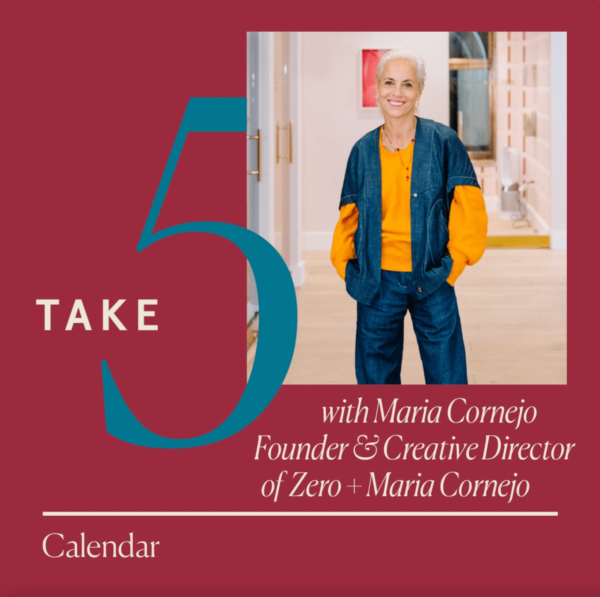
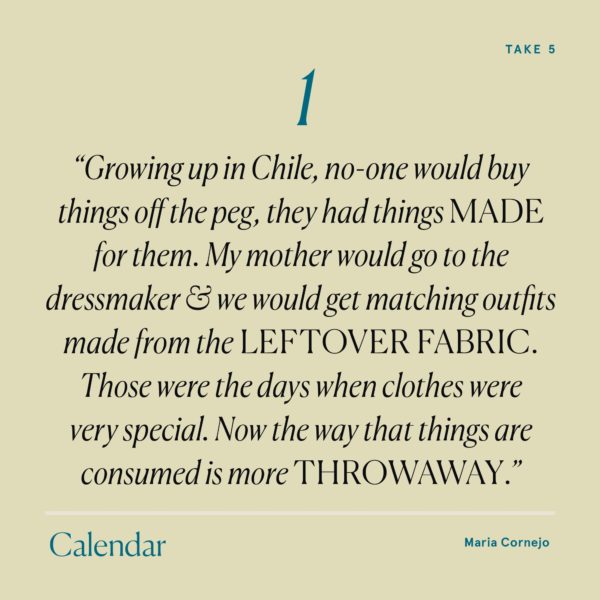
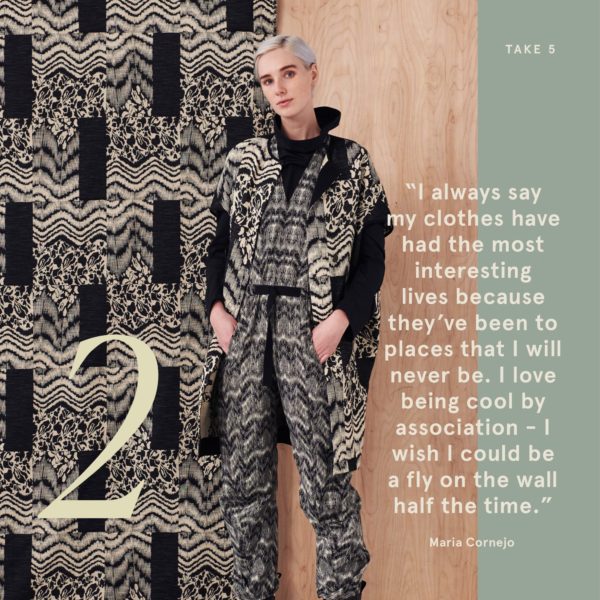
But, between a recent move to Manhattan with her husband (photographer Mark Borthwick) and her eight-month-old daughter to look after, Cornejo was exhausted and looking for a contained outlet for her creativity that wouldn’t involve jumping on a plane every fortnight. So, she started to think about what she wanted to wear – beautifully designed, comfortable clothes in unexpected silhouettes – and set about making them in a studio behind her store on Mott Street.
In the 23 years since, the label has become a much-loved favourite among an awe-inspiring roster of women – including Michelle Obama, Tilda Swinton, Tracee Ellis Ross and Julianne Moore – thanks to the ease and forever appeal of its pieces.
"The label is based on truth;
it’s based on something real,
it’s not based on bells and whistles"
Maria Cornejo
And Cornejo has been a true trailblazer when it comes to creating thoughtful, sustainable, stylish clothes; yes, she still upcycles some of her pieces, but she and her team also do everything they can to source responsible fabrics, reduce waste and support the community of women that work for them. And, after more than two decades, she is still going strong and in love with designing. “I’m proud of having had my own identity and not being swayed by other people,” she says. “The label is based on truth; it’s based on something real, it’s not based on bells and whistles, and I’m very proud of that. It’s been through many evolutions but it always comes back to the core – wearable clothes in interesting shapes and sustainability.” Isn’t that what we want most in our wardrobes?
